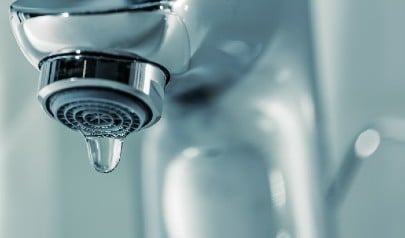Just How to Avoid Bathroom Water Damage
Just How to Avoid Bathroom Water Damage
Blog Article
Each person may have their own unique theory with regards to How to Prevent Bathroom Water Damage.

The restroom is extremely susceptible for moist buildup as well as potential water damages because of the frequent use water in it. This post supplies easy examination techniques to assist identifying water damage dangers.
The constant use of water in the shower room makes it exceptionally susceptible for wet accumulation as well as possible water damage. By inspecting it on a regular basis, you can reduce water associated problems.
The complying with collection of evaluations is very easy to perform as well as should be done when in every 3 months in order to keep your restroom healthy and to avoid potential water damages brought on by the tub, the shower, pipeline joints as well as plumbing, sinks, closets, and the commode
Do not neglect doing these inspections and be complete while performing them. Bear in mind that these straightforward evaluations can conserve you a lot of money by giving early indicators for water damage
Sinks as well as Cabinets
Sinks and also cabinets are revealed to wetness and also humidity everyday as well as are commonly overlooked. Examine consistently under the sink and on the counter top over it. Fix any drip in the catch as it may recommend drainpipe problems. Take a look around the sink, slow-moving draining pipelines may suggest an obstructed drainpipe. Replace sink seals if they are broken or loosened.
Bath tub and Shower
The shower and tub call for unique attention and maintenance. Inspect the floor tiles and also change if cracked. Ensure that there is no missing cement in between the floor tiles. Inspect and replace split caulking at joints where the wall surfaces fulfill the flooring or the bathtub. Clogged drains as well as pipelines issues will certainly protect against the bath tub from drying and also may indicate serious problems below the tub. Talk to a specialist quickly to stop architectural damages. Pay attention to discolorations or soft locations around the tub walls as they might suggest an internal leakage.
Plumbing
Signs for water damage are hard to find because most pipelines are set up inside the walls.
Pay unique attention to floor covering and wall surfaces wetness and discolorations as they might indicate an invisible plumbing issue. Check moisture degrees in adjoining rooms too.
The Bathroom
The toilet is an at risk water joint. Check the water lines and also search for leakages around the bathroom seat, in the hose, and also under the water storage tank. If you spot any kind of indications of moisture on the flooring around the toilet, look for leaks in the toilet edge as well as tank seals.
Know that hanging toilet dish antiperspirants enhances the opportunities for blockages.
TIPS TO PREVENT WATER DAMAGE IN THE BATHROOM
The average household uses approximately 80-100 gallons of water per person per day. For a family of 4, that's almost 2,500 gallons of water a week! The largest portion of this consumption comes from bathroom use. Flushing the toilet uses the most water, followed by taking a shower or bath. With that much water running through the home, water damage in the bathroom is bound to happen. Knowing how to spot signs of a water leak is essential to preventing long-term damage. This guide provides you with tips to reduce the impact of water damage on your bathroom.
CAUSES OF BATHROOM WATER DAMAGE
Pipe breaks are the most common cause of water damage we see in our daily jobs. The age of a pipe plays a large role in a pipe break as well as corrosion. Over time, the metal begins to break down, allowing water to escape. Frozen pipe breaks are also a concern in the winter months. Toilet overflows caused by paper products or children flushing inappropriate items. Degraded caulking around the toilet or bathtub can allow water seepage, sometimes behind the fixture, into the subfloor or walls. Condensation forms when the water in a pipe is cooler than the air temperature. Beads of water form on the exterior of the pipes, sometimes so much so that the water begins to drip and pool below. Sink or shower backups created by poor drainage. HOW TO PREVENT WATER DAMAGE IN YOUR BATHROOM
Inspect your toilet supply line for worn or frayed hoses and replace them as needed. Winterize your plumbing to prevent a frozen pipe break. Use vent fans to prevent condensation that can lead to mold growth. Routinely check and replace degraded caulking around your toilet or bathtub. Increase the temperature in your toilet tank and insulate your pipes during the warm summer months to keep condensation from forming. Use child safety locks on the toilets. Flush only toilet paper. "Flushable" wet wipes are actually not good for your plumbing system. Additionally, feminine hygiene products should not be flushed. Prevent water from escaping the tub or shower. Make sure shower curtains are in good condition. Inspect shower doors and replace the seal strip if necessary. Wipe up any water that accumulates on the floor and use bath mats. Water left to sit can cause damage to the tiles and flooring. Refrain from using bath products containing heavy oils to avoid a clogged drain.

I'm just very interested by How to Prevent Bathroom Water Damage and I really hope you liked my blog posting. Loved our blog? Please share it. Help somebody else discover it. Thanks a lot for your time. Visit again soon.
Visit The Following Page Report this page